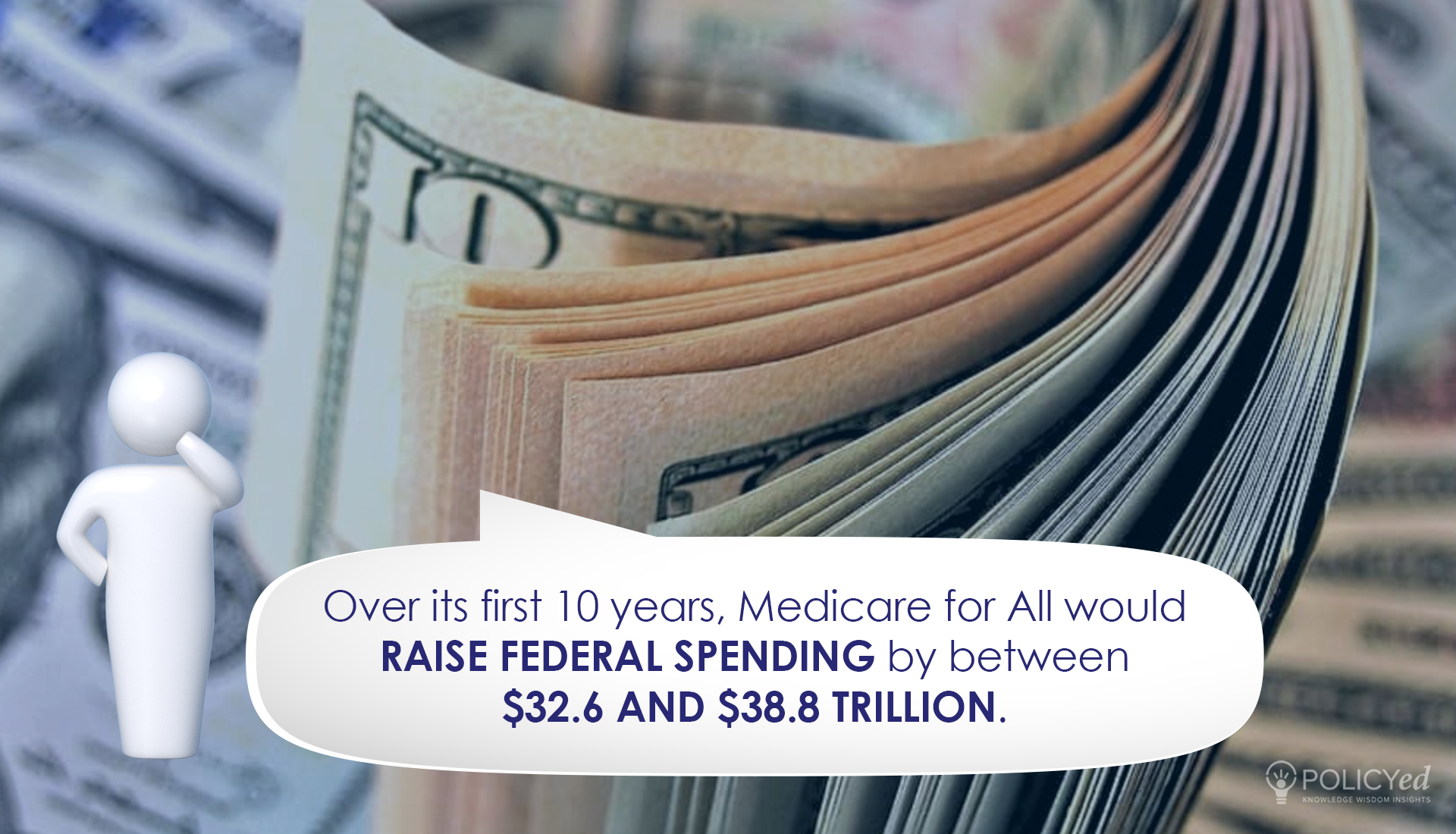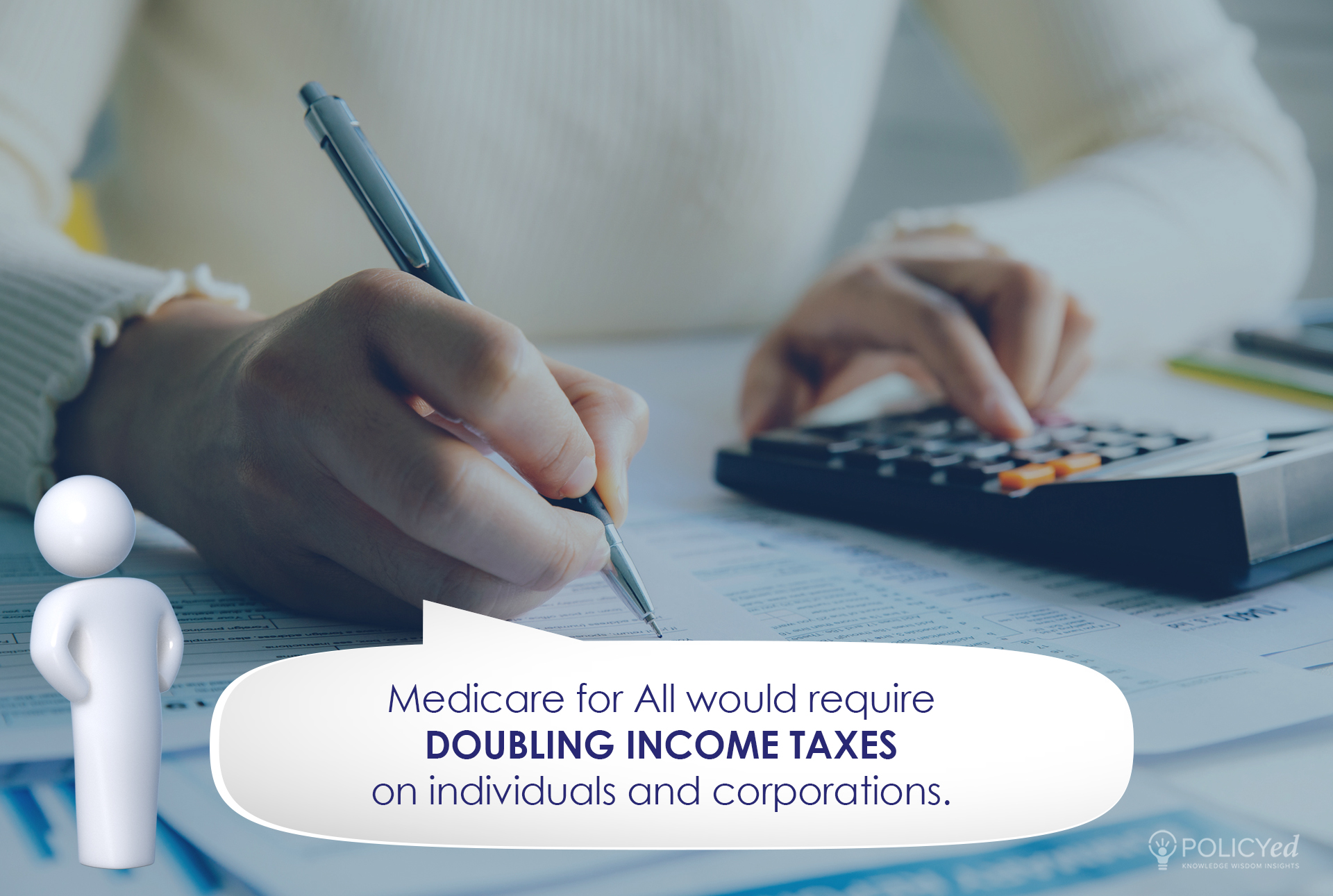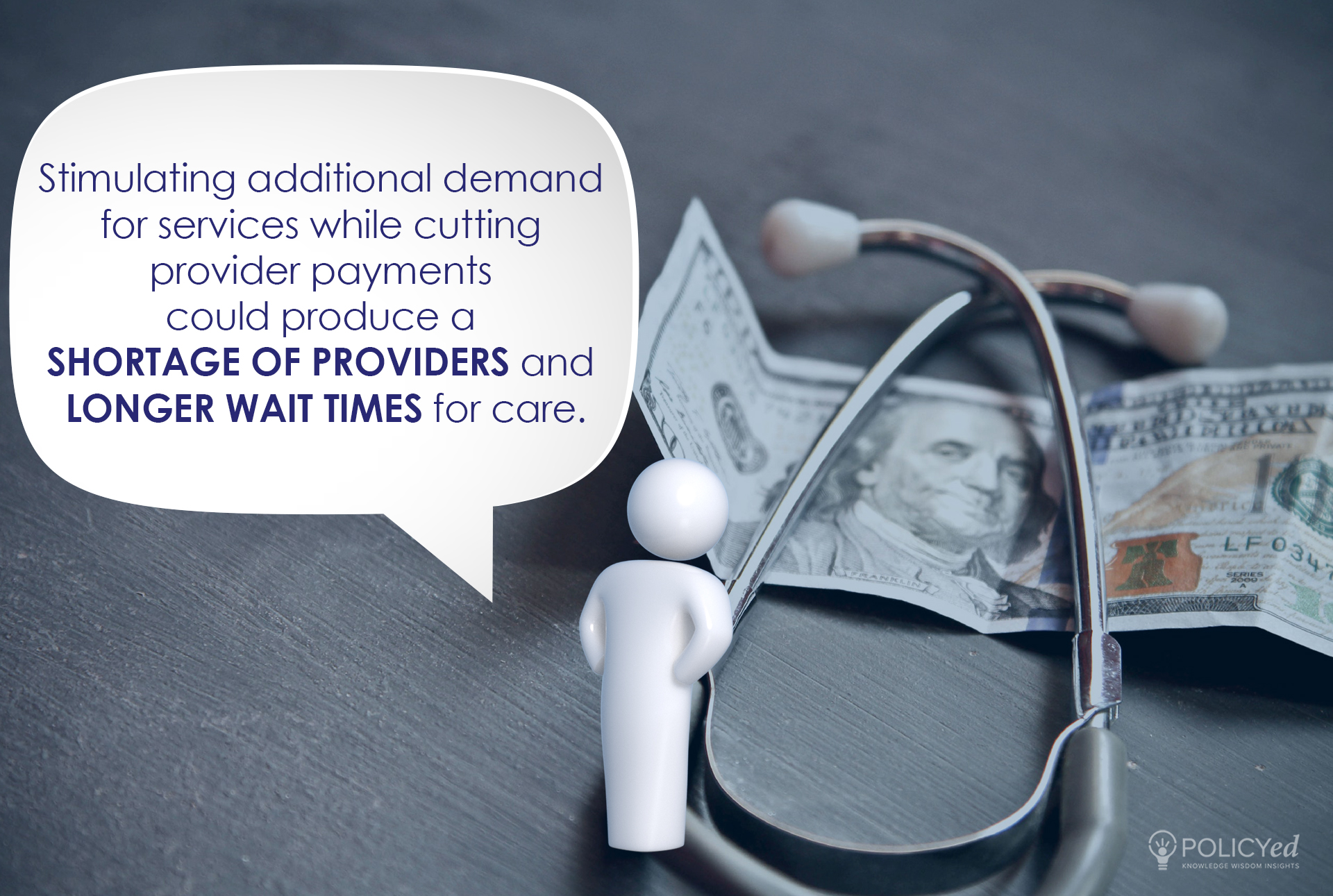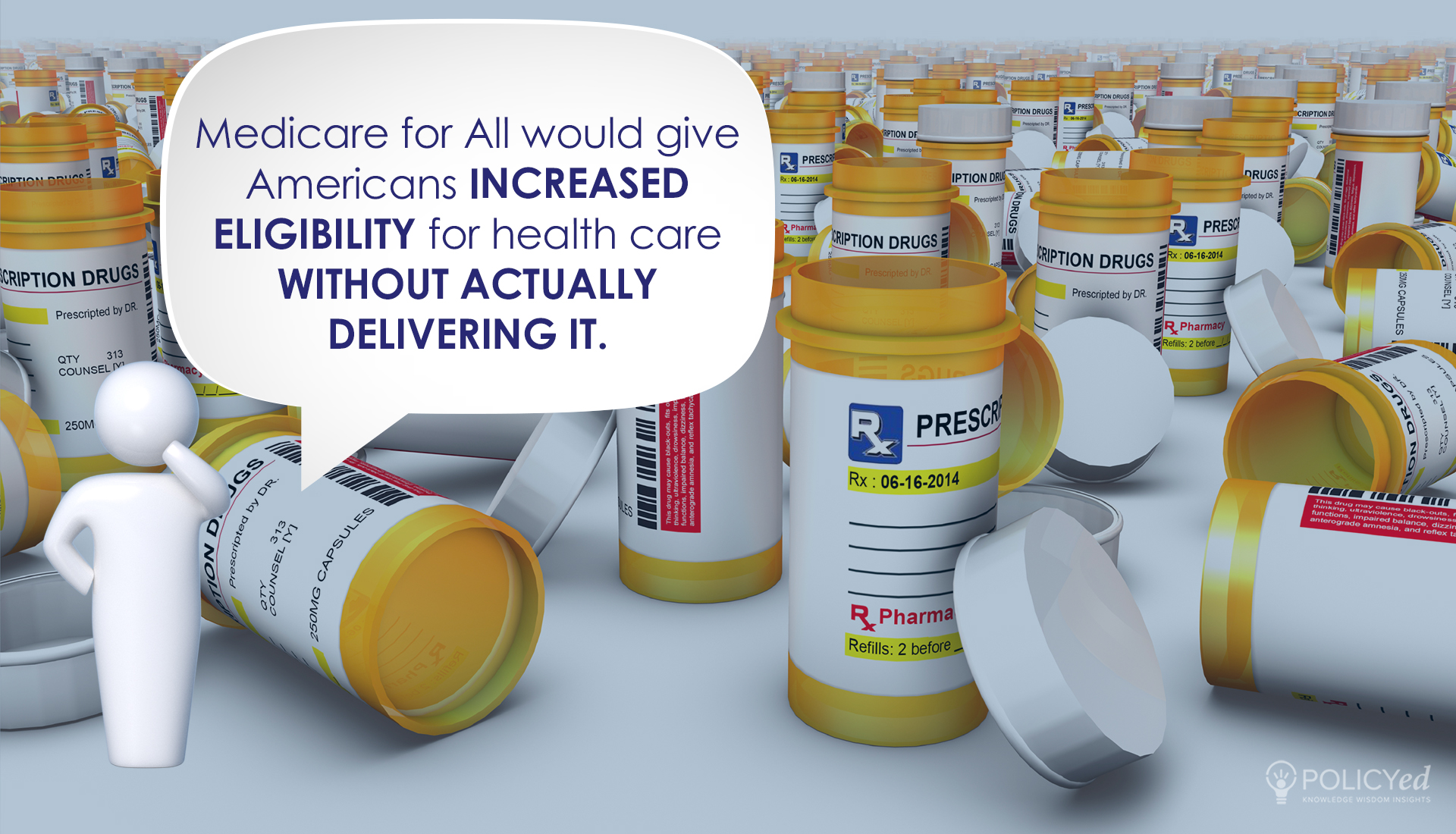Facts At Your Fingertips
Costs of Medicare for All
A 2018 study estimated Medicare for All would raise federal spending by between $32.6 and $38.8 trillion over its first 10 years, depending on the assumptions about health provider payment rates, drug prices, and administrative costs. These federal costs would all be above and beyond current federal spending. And they don’t include long-term care benefits, a feature of more recent proposals that would add trillions to the cost.
Perspective
For perspective, just to finance the lower-bound estimate of $32.6 trillion, all federal income taxes we currently pay as individuals, and all income taxes corporations pay, would have to more than double. Yet this plan implausibly assumes that Medicare for All would immediately cut payments for hospital and other health services by about 40 percent relative to what private insurance currently pays. Experience with similar programs at the state, federal, and international levels teaches us that governments don’t cut health provider payments so dramatically and suddenly, so Medicare for All’s actual costs would likely be much higher.
Changing Behavior
Medicare for All would induce Americans to seek more care. There is an ample economics literature demonstrating that the more care is financed by insurance, the more people tend to consume—irrespective of quality, effectiveness, or even necessity. The CBO recently found that stimulating this additional demand for services while simultaneously cutting provider payments could produce “a shortage of providers” and “longer wait times” for care.
Eligibility without Delivery
The CBO projected the time nurses spend on administrative duties under Medicare for All to fall by 80%. But if nurses’ administrative tasks only fall by half as much as projected—that is by just 40%—and if Medicare for All paid providers at Medicare payment rates, then 86% of all the new care Americans seek under Medicare for All simply couldn’t be met. Even more startlingly, 97% of the new demand for hospital and physician services couldn’t be met. In this scenario, Medicare for All would increase Americans’ eligibility for health care without actually delivering it.




